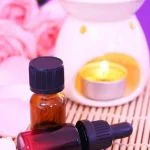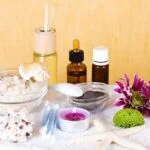Aromatherapy has been used for centuries as a natural way to promote physical, emotional, and spiritual well-being. One popular and convenient way to harness the benefits of aromatherapy is through the use of aromatherapy mist. In this article, we will explore how to make your own aromatherapy mist at home, discuss the various uses and benefits of aromatherapy mist, and provide some important tips for safe usage.
Aromatherapy mist is a simple and effective way to enjoy the therapeutic properties of essential oils. From promoting relaxation to boosting energy levels, aromatherapy mist can be tailored to suit a variety of needs. Whether you are looking to create a calming atmosphere in your home or seeking relief from headaches or congestion, aromatherapy mist can be a versatile tool in your wellness arsenal.
Understanding the nature of essential oils is crucial when it comes to creating a successful aromatherapy mist blend. Each type of essential oil carries its own unique set of properties and benefits.
By learning about the different types of essential oils and their therapeutic effects, you can tailor your aromatherapy mist blends to best suit your needs. In the following sections, we will explore how different essential oils can be used in aromatherapy mist blends, providing you with the knowledge needed to create personalized blends for various purposes.
Understanding Essential Oils
When it comes to making aromatherapy mist, essential oils play a crucial role in creating the desired therapeutic effects. There are various types of essential oils, each with its own unique properties and benefits. Some popular essential oils used in aromatherapy mist include lavender, peppermint, eucalyptus, tea tree, and lemon.
Lavender is known for its calming and relaxing properties, while peppermint is invigorating and can help with mental clarity. Eucalyptus is often used for respiratory support, and tea tree has antibacterial and antiviral properties. Lemon essential oil is uplifting and can help to improve mood.
It’s important to understand the therapeutic properties of different essential oils when creating aromatherapy mist blends. For example, if you’re looking to create a blend for stress relief, you might want to use lavender and chamomile essential oils for their calming effects. On the other hand, if you’re focusing on creating an energizing blend, using citrus oils like lemon or orange would be more suitable.
In addition to their therapeutic properties, essential oils also vary in terms of their volatility and intensity. Some essential oils are more potent than others and may require dilution or blending with other milder oils to create a balanced aroma. Understanding the differences between essential oils will help you create effective and well-balanced aromatherapy mist blends.
| Essential Oil | Therapeutic Properties |
|---|---|
| Lavender | Calming and relaxing |
| Peppermint | Invigorating and mental clarity |
| Eucalyptus | Respiratory support |
| Tea Tree | Antibacterial and antiviral properties |
| Lemon | Uplifting and mood improvement |
By understanding the therapeutic properties of different essential oils, you can create personalized aromatherapy mist blends to suit your specific needs. Whether it’s for relaxation, focus, or even immune support, the right combination of essential oils can provide holistic benefits for both mind and body. This knowledge will not only allow you to enjoy the full potential of aromatherapy mist but enable you to make informed choices when crafting your own blends at home.
Choosing the Right Base
Aromatherapy mist can be a wonderful addition to your self-care routine, providing therapeutic benefits and creating a calming atmosphere in your space. One of the key components of making aromatherapy mist is choosing the right base. The base serves as the carrier for the essential oils and plays a significant role in the overall effectiveness of the mist. There are several types of bases to choose from, each offering its own unique benefits.
One popular choice for a base in aromatherapy mist is distilled water. It is simple, readily available, and cost-effective. Distilled water allows the essential oils to disperse evenly and create a fine mist when sprayed.
Another option is witch hazel, which not only helps to disperse the essential oils but also has astringent properties that can be beneficial for skin health. Additionally, you can use alcohol such as vodka or rubbing alcohol as a base, which helps to preserve the mist and extend its shelf life.
When deciding on a base for your aromatherapy mist, consider the intended use and desired benefits. For example, if you plan to use the mist on your skin or hair, choosing a base with moisturizing properties such as glycerin or aloe vera could be beneficial. Understanding the properties of different bases will help you create an aromatherapy mist tailored to your specific needs.
Here’s a simple recipe for creating an aromatherapy mist using distilled water as the base:
- Fill a clean spray bottle with 2 ounces of distilled water
- Add 10-12 drops of your preferred essential oil (such as lavender for relaxation or eucalyptus for respiratory support)
- Screw on the cap and shake well to combine
- Your aromatherapy mist is now ready to use.
| Base Type | Benefits |
|---|---|
| Distilled Water | Cost-effective and provides even dispersion of essential oils |
| Witch Hazel | Astringent properties are beneficial for skin health |
| Alcohol (vodka or rubbing alcohol) | Helps preserve the mist and extend its shelf life |
DIY Aromatherapy Mist Recipes
Creating your own aromatherapy mist at home is a simple and satisfying way to enjoy the benefits of essential oils. You can customize your blends to suit your specific needs and preferences, whether you want to create a calming mist for relaxation, an energizing mist to boost your mood, or a refreshing mist to invigorate your space. Here’s how to make aromatherapy mist using a few basic ingredients and easy-to-follow steps.
First, you’ll need to gather the necessary materials: distilled water, alcohol (such as vodka or witch hazel), and your choice of essential oils. When selecting your essential oils, consider their therapeutic properties and how they can complement each other in your blend. For example, lavender and chamomile are known for their calming effects, while citrus oils like lemon and grapefruit are uplifting and refreshing.
Next, you’ll need a spray bottle to store and dispense your aromatherapy mist. Make sure the bottle is clean and dry before adding any ingredients.
To create your mist blend, simply fill the bottle with water (leaving some room at the top), add a small amount of alcohol as an emulsifier (about 1-2 tablespoons per cup of water), then add around 10-15 drops of essential oil. You can adjust the number of drops based on your personal preference for scent strength.
Once all the ingredients are added, securely attach the spray nozzle to the bottle and shake well to mix everything together. It’s important to shake the bottle before each use to ensure that the essential oils are evenly distributed in the water. Now your customized aromatherapy mist blend is ready to use. Simply spritz it into the air or onto linens, pillows, or clothing whenever you need a burst of aroma therapy goodness.
By making your own aromatherapy mist at home, you can enjoy all-natural scents without any harsh chemicals or artificial fragrances. Plus, you have complete control over the ingredients in your blend, allowing you to cater it specifically towards your needs. Making aromatherapy mists at home is also more cost-effective than purchasing pre-made ones from stores and allows for greater creativity in creating unique scents tailored just for you.
Safety Precautions
Aromatherapy mist can be a wonderful addition to your wellness routine, offering a range of benefits from relaxation to mood enhancement and even respiratory support. However, it is important to use these products safely to avoid any potential adverse reactions. Here are some crucial safety precautions to keep in mind when using aromatherapy mist:
- Dilution: Essential oils are highly concentrated and should always be diluted before use in aromatherapy mist. Be sure to follow recommended dilution ratios for each essential oil based on the specific purpose and intended use of the mist.
- Patch Test: Before using a new aromatherapy mist blend, it’s essential to perform a patch test on a small area of skin to check for any sensitivities or allergic reactions.
- Avoiding Certain Essential Oils: Some essential oils can be irritating or even toxic when used improperly. It’s crucial to research and understand which oils are safe for use in aromatherapy mist, especially if you have pets or children in the household.
Knowing how to make aromatherapy mist at home allows you to control the quality of ingredients and ensure that it is safe for use. By following these safety precautions, you can enjoy the benefits of aromatherapy mist without any unwanted complications.
Always remember that essential oils should be treated with respect and used responsibly. If you have any concerns about using aromatherapy mist, consult with a professional aroma therapist or healthcare provider for personalized guidance.
Storage and Preservation
After creating your own homemade aromatherapy mist, it is important to properly store and preserve it to ensure that it maintains its efficacy and fragrance for as long as possible. Here are some tips for storing and preserving your DIY aromatherapy mist:
Choose the Right Container
When storing your homemade aromatherapy mist, it is essential to use the right type of container. Dark glass bottles, such as amber or cobalt blue glass bottles, are ideal for preserving the quality of the essential oils used in the mist. These containers help protect the oils from light exposure, which can cause them to degrade over time.
Keep It Cool and Dry
To prolong the shelf life of your aromatherapy mist, store it in a cool, dry place away from direct sunlight and heat. Exposure to heat and light can cause the essential oils in the mist to deteriorate more quickly. A cabinet or drawer in a cool room is an ideal storage location for your homemade aromatherapy mist.
Avoid Contamination
To prevent contamination and extend the shelf life of your aromatherapy mist, make sure to use clean hands and surfaces when handling the bottle. Additionally, avoid introducing water or moisture into the bottle, as this can lead to bacterial growth and spoilage.
By following these simple tips for storing and preserving your homemade aromatherapy mist, you can ensure that it remains potent and fragrant for a longer period of time. Proper storage will help maintain the therapeutic benefits of the essential oils used in the mist, allowing you to continue enjoying its aromatic benefits.
Alternative Uses for Aromatherapy Mist
Aromatherapy mist is not just limited to being used as a room or linen spray. There are numerous creative and alternative ways to use aromatherapy mist that can enhance overall well-being and promote a relaxing atmosphere. In this section, we will explore some unique and innovative ways to incorporate aromatherapy mist into your daily routine.
Personal Fragrance
One interesting alternative use for aromatherapy mist is as a personal fragrance. You can create your own signature scent by mixing various essential oils with water or alcohol-based base and using it as a natural perfume. Simply spritz the mist on your pulse points such as wrists, neck, and behind the ears for a subtle, all-natural fragrance that doubles as an aromatherapy treatment.
Yoga and Meditation
Another creative way to use aromatherapy mist is during yoga or meditation practice. Using a soothing blend of essential oils such as lavender, frankincense, or sandalwood in a water-based mist can help create a tranquil atmosphere to enhance your mindfulness practice. Spraying the mist in the air around your designated relaxation space can create a calming and conducive environment for yoga or meditation.
Car Freshener
Aromatherapy mist can also be used as an all-natural car freshener. Instead of using synthetic air fresheners that contain potentially harmful chemicals, you can use homemade aromatherapy mists made with essential oils to keep your car smelling fresh and clean. Simply spritz the mist inside your car and enjoy the natural aroma while driving.
By leveraging these alternative uses for aromatherapy mists, you can maximize the benefits of essential oils while exploring new ways to incorporate aromatherapy into different aspects of your life. With just a few simple ingredients, you can make customized mists tailored to suit your preference and needs for various purposes. Experiment with different essential oil blends and bases to find the perfect combination that works best for you.
Conclusion
In conclusion, aromatherapy mist offers a wide range of benefits for both physical and emotional well-being. From promoting relaxation and reducing stress to boosting mood and alleviating headaches, the therapeutic properties of essential oils make aromatherapy mist a valuable addition to any self-care routine. With the step-by-step instructions provided in this article, readers can easily create their own custom blends at home, tailored to their specific needs and preferences.
By understanding the different types of essential oils and their therapeutic properties, as well as choosing the right base for their aromatherapy mist, readers can customize their blends to suit their individual needs. It is important to note that safety precautions should always be observed when using essential oils, and proper storage and preservation techniques are crucial for maintaining the efficacy of homemade blends.
Frequently Asked Questions
How Do You Make Essential Oil Mist?
To make essential oil mist, you’ll need a spray bottle, distilled water, and your choice of essential oils. Start by filling the bottle with water and then add a few drops of your chosen essential oils. Shake well before each use.
Can You Mix Essential Oils With Water for a Spray?
Yes, you can mix essential oils with water to create a spray. However, it’s important to use a dispersant like witch hazel or rubbing alcohol to help the oils mix evenly with the water. This will ensure that the spray is well-blended and effective.
How Do You Make a Calming Mist?
Making a calming mist involves choosing calming essential oils such as lavender, chamomile, or bergamot. Add a few drops of these oils to distilled water in a spray bottle, along with a dispersant like witch hazel. This mist can be used to promote relaxation and reduce stress.

Are you looking for a natural way to improve your health and wellbeing?
If so, aromatherapy may be the answer for you.





